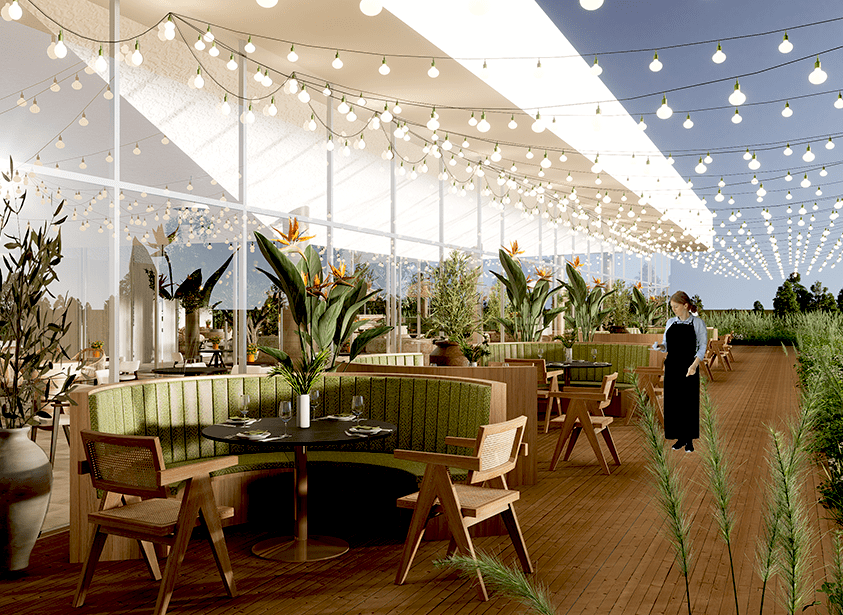Tim Fu, the visionary use of AI

How can Artificial Intelligence integrate with Design? Discover the AI explorations of Tim Fu, internationally renowned architectural designer specialising in advanced computation and artificial intelligence.



Tim Fu is a distinguished architectural designer specializing in advanced computation and artificial intelligence (AI). Having emerged from Zaha Hadid Architects, he went on to establish Studio Tim Fu, a cutting-edge design practice that pioneers the seamless integration of AI into visionary designs. His groundbreaking AI explorations have garnered international recognition, with mentions in e.g., Skynews, Bloomberg, ARTE etc., and exhibits during the Venice Biennale.
“A.I. has been revolutionising any industries throughout the years and now it’s really starting to enter the domain of design”.



Tim Fu taught his students how to control AI to produce buildable ideas using a software that breaks down the human control involved in typing a text. The prompt crafting process involves exploring the way a text is written, the text itself, and the idea behind it. The iterative process involves imagining the image results of the text, picturing them as local clusters, and combining them to get the final result.
The technology in AI architecture design has greatly improved in just one year. Exterior and interior concepts are developed to potentially create design language and explore materials, lighting, and tone. The AI design process involves exploratory endeavours with prompt crafting, multiple methods, and testing behaviour of each set of texts. The process of improving involves optimizing the text until the desired image is achieved and then continuing to vary and evolve it.
There are tools for better control, such as selecting individual locations, allowing for fine-tuning and exploring possibilities. Human intervention is necessary to drive the AI towards design and elevate it through personal artistry. There is a lot involved in the text prompting process and controlling the algorithm of the AI, which requires courses to cover the basics. The nuances of controlling every single element of the AI are similar to a photography class teaching how to control a camera.
Ability to take multimodal inputs like images is reinvigorating various methods of design using AI. Simple models can be designed and then AI can reimagine them into more complex designs. Floor plans, both hand-drawn and computer-generated, can be inputted and allow AI to generate designs. Inspirations from nature and other sources can be inputted into AI to reimagine materiality, tectonics, and expression in architecture and other design fields.
The process involves a combination of AI understanding of parametric design and the designer’s own understanding of geometry and algorithms.
The author’s design field focuses on incorporating future era styles and aesthetics of clean, futuristic designs. AI images can convey not just the form of a space, but also the cultural background, mood, tone, and emotions that the space sets for the user. It’s very important the use of intentional curves and modularity in producing buildable and cost-effective architecture. AI is a tool for designers to drive and not the other way around.
It is possible to incorporate elements from different architectural styles, such as Gothic architecture and Renaissance interiors, to create new designs and reimagine traditional styles in today’s context. Tim believes that the potential combinations of historical and contemporary design elements are limitless; this is why he is focus in analysing the process of approaching constructability in future-era designs.
Firstly, Zaha Hadid and her passion for design and the exploration of technology. At ZHA they always aim to push the boundaries of what is possible in design and construction, and this spirit of constant innovation is quite inspiring to every person involved. Beyond that, he is also quite inspired by looking at nature, organic morphologies, geological formations; endless array of patterns in nature that inspires design.
Midjourney is the main programme used by Tim Fu, while post-processing is done with Photoshop and Stable Diffusion.
TALK WITH TIM FU
Tim Fu was a guest speaker in Domus Academy’s ‘Disrupting Patterns Talks’ series, the open, multidisciplinary, innovation-oriented lecture series covering various design-related topics. During the talk, he delved into how artificial intelligence works and what the potential is as well as his goals working with it.
Watch the full video and relive the interview!
MORE ABOUT AI?
Check out also the interview with Refik Anadol, Turkish designer and media artist, pioneer in the aesthetics of machine intelligence.









